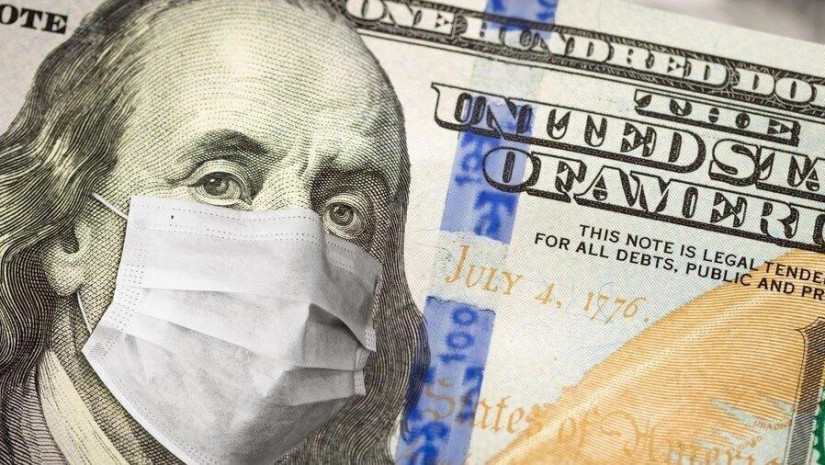As the world is partially re-opening and getting back to normal, it helps to reflect on what the pandemic economy meant for financial markets.
The post-pandemic economy combined with interest rate increases could be an inflection point for global financial markets.
The global economy of the last two years has been very pandemic-driven. The key question for markets and governments depends on whether the omicron strain of the virus, is it really going to be the last wave of the mysterious respiratory illness that emerged in Wuhan, China, in January 2020. Financial markets, politicians, government officials, business leaders, and public health professionals were ill-prepared for the most devastating pandemic in a century. Leading to the tragic death of 5.8 million people globally with over 411 million confirmed covid cases, according to John Hopkins University coronavirus resource Center.
It is interesting to note that larger parts of the western world are increasingly willing to live with the concept of an endemic versus the country where the pandemic started, namely the people’s republic of China that is still insisting on a zero covid policy further complicating the easing up of global supply chains and its impact on global inflation.
This year the economy is basically returning to economic activity. Inflation is still considered to be both a supply and demand problem at least in the largest economy of the world the United States. While the U.S. federal reserve suggested and tried to assure global markets that “inflation will be temporary”. In the end, the FED caved in and changed its official tune to “inflation higher for longer”.
Central banks concerned about growth are responding less strongly than in past interest rate hiking cycles. Or what has typically and historically has been done to try to fight inflation. It's usually about 200 or 300 basis points interest rate hikes. . So far, the markets are preparing for 75 basis points to 125 basis points increase for 2022. Many economists view this as a mild response relative to the 7% inflation print that took place in the United States.
Markets and wall street economists now project the possibility of 5 to 7 interest rakes hikes this year with the first interest rate increase expect to come as early as at the next FOMC meeting from March 15 to 16th. Recent market volatility is due to market concerns the FED might raise rates by 50 basis points at the first meeting testing the resilience of the global financial market to the end of easy money.
Asset prices are elevated: the last time, global equities were so pricey relative to long-run profits was before the U.S stock market crashes of 1929 and 2001. Many investor and fund portfolios have crowded trade positions in “long-duration” assets that could be at risk to yield profits only in the distant future. Higher interest could lead to a global re-pricing, especially of “long-duration” assets.
The covid 19 recession has seen the fastest, steepest downgrades in consensus growth projections among all recessions since 1990. That has been the reason why the fed at the start of the pandemic acted as a market maker of last resort, slashing interest rates to zero and promising up to $ 3 trillion to support financial markets and to back-stop wall street broker-dealers and some mutual funds. The Fed is now estimated to be sitting on a $9 trillion balance sheet or 40% of U.S GDP, which is historic and potentially unsustainable. The Biden administration and the Federal reserve are very concerned about inflation because of the outsized impact is having on low-income Americans.
Key risks to the financial markets and the end of cheap money are not only that the Fed is preparing the markets about raising interest rates but reducing their balance sheet at the same time.
We are transitioning from a world based on cheap money asset bubbles and large wealth gaps to a potentially more “common prosperity” post covid as the great resignation and wage inflation could benefit larger parts of the lower-income society.
Due to the pandemic, it was the first time in a recession in 2020 that we had income growth of the general population. Usually, the recession is income reduction. The reason we had disposable income growth, which is both government transfers and your private income, was that the government massively increased transfers starting with the CARES Act in 2020, all the way down through the Rescue Act in 2021, the U.S. saw an enormous fiscal response.
Markets face having the prospect of less if any additional stimulus coming out of Washington, raising the question of whether the investment and global markets cycle is turning. The combination of elevated valuations and rising interest rates against the backdrop of QT (quantitative tightening) could result in large losses for investors. Now is the time to review and stress test your portfolios.
Can we have a Fed that's raising interest rates, reducing their balance sheet at the same time, without pushing the US economy into recession?
The answer may well be found with the old wall street adage “let the markets guide us.”
Rainer Michael Preiss serves as an investment advisor & portfolio strategist.
















